We do seem to have lost sight of something in this Kardashian-addled world. Which is the thought that, sometimes – perhaps even often – enough really is enough. As much of what you need, and no more than that.
At a time when apparently everything from coffee cups to handbag straps have to be gilded with rose gold, that may seem an odd thought but when it comes to electric cars, it’s precisely the thought that we should be having. Until now, the obsession when it comes to electric vehilces is to have ever-bigger batteries and ever-longer ranges. But, we really ought to be asking, is that actually what we need?

Dacia thinks not, and noting that people are apparently clamouring for an affordable electric car, Dacia is darned well going to give people exactly that. Prices are still a little opaque for this new Dacia Spring, not least because it’s built in China and is therefore affected by the new European Union tariffs on Chinese-made EVs, but the expectation is that when it finally lands here – in November or thereabouts – it should be by quite some distance the most affordable electric car on sale. Indeed, to go by the UK price for the Spring, it might even be as low as €17,000.
For that kind of cash, you should probably not expect much, and Dacia is not going to give you much. In fact, consider yourself lucky that you’re even getting a 26.8kWh battery and a range of 225km – there are plug-in hybrids with bigger batteries than that. However, Dacia knows – thanks to there already being 150,000 left-hand drive Springs on the road in Europe – that even this truncated range is more than enough.
READ MORE
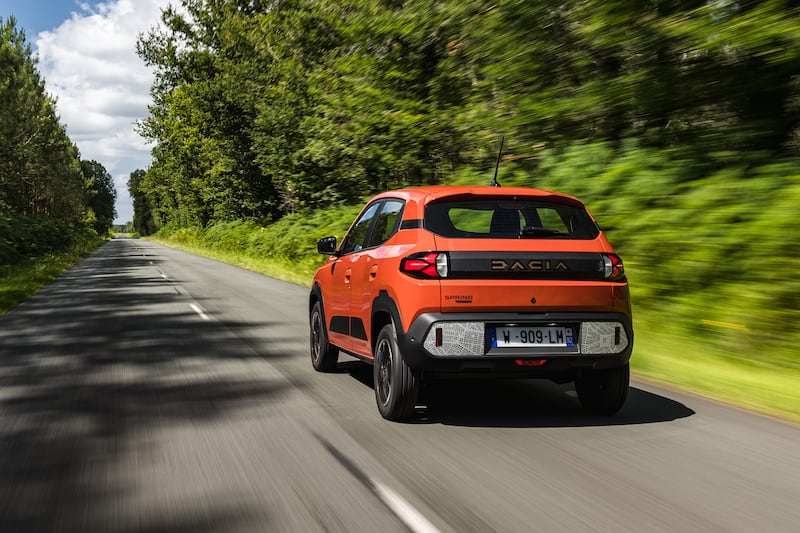
Spring owners, so far, traverse only 37km a day on average, across four journeys each day, and they do almost all their charging at home. Dacia’s chief executive Denis Le Vot told The Irish Times last year that he would like to “snap the Spring’s battery in half” so as to save on the purchase price and give people even less of what they actually need.
However, Le Vot didn’t get his way. Presumably trying to flog an EV with a range of just 100km would be a step too far, even for Dacia. However, in spite of the all-new bodywork (only the roof is shared with the previous Spring model) and an interior that’s classier than you might expect, Dacia is chasing every penny with this car.
That extends to the basic electric motor, possessed of just 45hp and a 0-100km/h time of 19.1 secs (an original Mini from the 1960s would annihilate that). Thankfully, this time around that motor is joined by a more powerful version, with 65hp and 113Nm of torque. That doesn’t sound like much, and the 13.7 sec 0-100km/h time seems to confirm that, but the Spring feels sprightlier than you might expect.
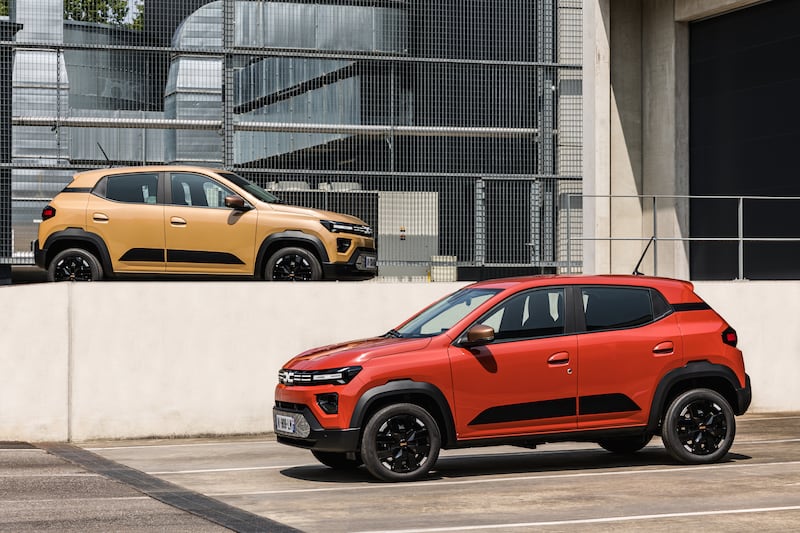
It helps that Dacia threw us the key to its new EV (literally – you turn an old-fashioned metal key in an ignition barrel to start this car, no expensive starter buttons here) in Bordeaux. Not only were the bucolic countryside and balmy summer weather meant to lull our objectivity, but the roads – almost all of them narrow country roads with 80km/h speed limits – were practically purpose-built for the Spring. Well, that research that shows owners cover only 37km a day shows that their average speed on those journeys is a matching 37km/h, so this is never a car designed to be quick.
Helpfully, though, the Spring is light. Our Extreme-spec test car (the most expensive version) weighs just 984kg, sans driver. That, says Dacia, makes it the only EV that weighs under a tonne, although I spoil that party by driving the weight up by about 10 per cent.
Nonetheless, light weight always helps a car to feel quicker than it is, and so it proves. Mash the tiny accelerator pedal as you come off a roundabout and the Spring positively rockets up to 80km/h. Performance thereafter is more leisurely, and the Spring is all out of breath at 130km/h, but the upside to all this slow driving is excellent energy consumption. Indeed, against Dacia’s WLTP claim of 13.5kWh/100km, we managed to squeeze 12.9kWh/100km out of the little Spring, and that was with the air conditioning going.
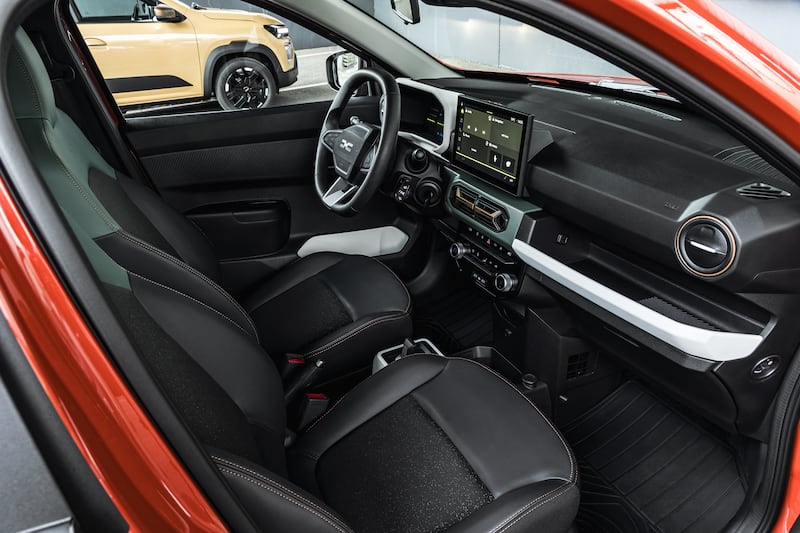
There is a real joy in driving a car such as this, a car that is precisely as little as you can possibly cope with and not an ounce more. A car that takes up minimal space on the road (parking amid tight urban spaces is a total doddle) and which needs minimal resources to run. In fact, you don’t even need to have a home charging point – an outdoor three-pin socket will suffice, as the Spring’s small battery will charge overnight in 11 hours from one of those.
If you do need fast charging, there’s an optional 30kW DC charging connection. Oh, and the Spring can send power out too – there’s vehicle-to-load (V2L) capability, so it can be used to power other electrical devices. There’s even an attachment that includes a domestic socket, and Dacia was using a Spring at the launch event to make tasty cups of coffee from a Nespresso machine plugged into the car, which lends it an air of sophistication you might not have expected.
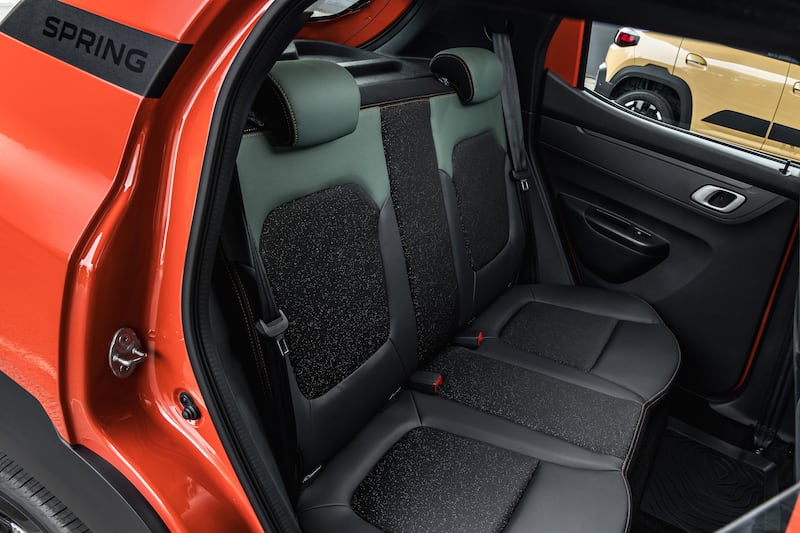
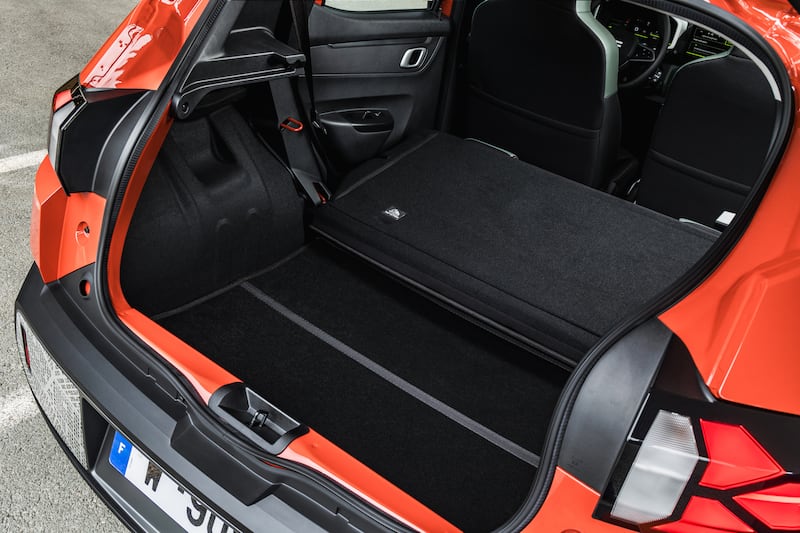
As does the cabin. Sure, the plastics are all cheap but they don’t feel excessively so, and the chunky design looks pleasingly robust. There’s a standard seven-inch digital instrument panel, and an optional 10-inch infotainment screen. There’s also lots of storage – Dacia claims more than 30 litres of cabin stowage, backing up the generous 308-litre boot and the optional 35-litre ‘Frunk’ under the nose – and there are options to make it more practical still. Dacia’s You-Clip system is part of the cabin design, allowing you to buy simple clip-on and clip-off accessories including cup holders, a lidded storage box, and even a mobile phone clamp with built-in wireless charging.
There are limitations, of course. The Spring is narrow, so bigger and taller drivers will find the driving position cramped. The rear seat is tiny, and seats only two people. The springs are soft, so big lumps put you on the bump-stops, and the steering is light, over-geared, and feels entirely disconnected from the front wheels.
Which is not to say that the Spring can’t be fun. As with so many small, underpowered cars on tiny wheels (14-inch steel rims are standard, with 15-inch wheels as an option) there’s huge fun to be had in coaxing the Spring through fast corners that it’s really not designed for. It’s no sports car, and that’s exactly why it’s actually enjoyable – you and it have to work together to make progress.

The price will be critical, of course. Dacia must skirt the shoals of the EU’s new China EV tariffs. The Spring is built in China, which helps keep its price down to a minimum, and Dacia told The Irish Times that even with the tariffs, it wouldn’t make sense to shift production to Europe or elsewhere. There was also a definite hint being dropped that negotiations are under way which may see European brands building cars in China given some kind of derogation from the new tariffs. We shall see.
The Spring needs to be cheap. It’s so small, so slow and so short-ranged that only a tiny price tag will make it truly appealing. It’s arguably going to be too short on that range to make it your only car purchase in Ireland – imagine trying to drive from Cork to Dublin on a rainy winter’s day – but if it’s cheap enough then it becomes the perfect second-car runabout, ideal for nipping in, through and out of town or for short runs out into the countryside.
Stick to those kinds of roles and in all honesty the Spring is just about the most charming car we’ve driven all year. It’s precisely the amount of car you need and not a jot more.














